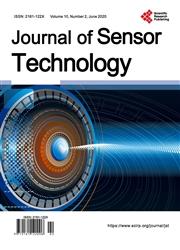Sensor Data Geographic Forwarding in Two-Dimensional and Three-Dimensional Spaces
引用次数: 0
Abstract
A wireless sensor network is a collection of sensor nodes that have the ability to sense phenomena in a given environment and collect data, perform computation on the gathered data, and transmit (or forward) it to their destination. Unfortunately, these sensor nodes have limited power, computational, and storage capabilities. These factors have an influence on the design of wireless sensor networks and make it more challenging. In order to overcome these limitations, various power management techniques and energy-efficient protocols have been designed. Among such techniques and protocols, geographic routing is one of the most efficient ways to solve some of the design issues. Geographic routing in wireless sensor networks uses location information of the sensor nodes to define a path from source to destination without having to build a network topology. In this paper, we present a survey of the existing geographic routing techniques both in two-dimensional (2D) and three-dimensional (3D) spaces. Furthermore, we will study the advantages of each routing technique and provide a discussion based on their practical possibility of deployment.二维和三维空间中的传感器数据地理转发
无线传感器网络是传感器节点的集合,这些节点能够感知给定环境中的现象并收集数据,对收集到的数据执行计算,并将其传输(或转发)到目的地。不幸的是,这些传感器节点的功率、计算能力和存储能力有限。这些因素影响了无线传感器网络的设计,使其更具挑战性。为了克服这些限制,已经设计了各种电源管理技术和节能协议。在这些技术和协议中,地理路由是解决一些设计问题的最有效方法之一。无线传感器网络中的地理路由利用传感器节点的位置信息来定义从源到目的的路径,而无需构建网络拓扑。在本文中,我们提出了现有的地理路由技术在二维(2D)和三维(3D)空间的调查。此外,我们将研究每种路由技术的优点,并根据它们的实际部署可能性进行讨论。
本文章由计算机程序翻译,如有差异,请以英文原文为准。
求助全文
约1分钟内获得全文
求助全文

 求助内容:
求助内容: 应助结果提醒方式:
应助结果提醒方式:


